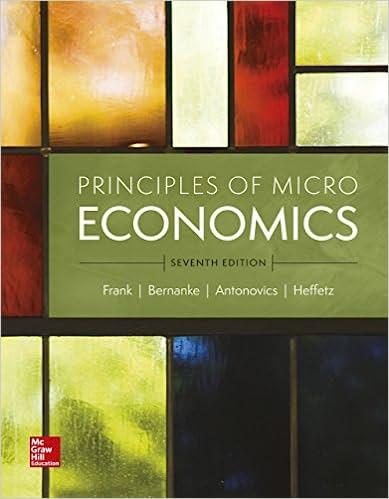
Help! I want to compre my answers thanks! Please include steps to verify if I went wrong somewhere.
Econ 6350 Asmgnment 3 Instructions: Present your answers in a coherent and logical way (rst part (a), then (b), etc.). Answers without proof of steps lose half of the points for that question (if the question requires only a diagram, then half the points. If the answer requires more things, depends on the number of things required). Each student is to turn their own unique homework. The idea is for each student to do its own homework without help from others (although students can use notes, textbook, etc.). Since each person is doing their own homework, no two homeworks should present identical output. If that happens with 2 or more homeoworks, there will be a penalty for each students presenting the same output. The le is supposed to be in Word or in PDF format. A monopolist faces an inverse demand given by P = 1020 IDQ where P is the price of of the good they sell and Q represents the quantity produced and sold at the market price P. The monopolist's cost function is given by C (Q) = 10, 0m + 20Q where Q is the quantity produced and C represents the cost in dollars. a) [3GP] Find the optimal price and quantity that the monopolist would choose under the assumption that their goal is to maximize prots. Show all of the steps required to arrive at the solution.1 b) [20F] Compute the prots of this monopolist. Show all of the steps required to arrive at the solution. c) [3UP] In a diagram with the market demand, identify the deadweight 10$ (DWL) arising from this monopoly (DWL shape depends on demand and cost functions so make sure your sketch resemble the shapes of the particular cost and demand functions in this problem) and then compute this amount. Hint: the size of a DWL is typically the area of some \"triangle". Area of a triangle is just base*height. See sections 9.3 and 9.4 in the textbook. (1) [2UP] Now amume that the government imposes a tax/ unit of $100. Find (and show all of the steps required) the optimal price and quantity in the presence of this tax. Does the monopolist pare the whole tax to consumers? Hint: compare the prices consumers would pay without a tax, versus the new price the monopolist charges if there is a tax. [A little bit of calculus useful for this problem. If a function f[:r) is given by f{z) = use" for constants c 7E 0 and 1!. 7E 0, then the derivative (expressed as f' {:r) or 5:- if we dene y = f(z)) is given by g:- = Min-1. Example: if y = 3:2, then Ear = 5a,- d








